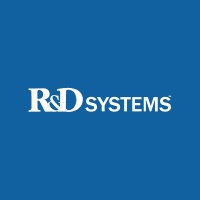DMBT1 Monoclonal / Alexa Fluor 350 / 548031
Product Details
| Description | Mouse DMBT1 Alexa Fluor 350-conjugated Antibody | |
|---|---|---|
| Conjugate | Alexa Fluor 350 | |
| Clone | 548031 | |
| Target Species | Mouse | |
| Applications | FC | |
| Supplier | R&D Systems | |
| Catalog # | Sign in to view product details, citations, and spectra | |
| Size | ||
| Price | ||
| Antigen | ||
| Host | ||
| Isotype |
About DMBT1
Loss of sequences from human chromosome 10q has been associated with the progression of human cancers. This gene was originally isolated based on its deletion in a medulloblastoma cell line. This gene is expressed with transcripts of 6.0, 7.5, and 8.0 kb in fetal lung and with one transcript of 8.0 kb in adult lung, although the 7.5 kb transcript has not been characterized. The encoded protein precursor is a glycoprotein containing multiple scavenger receptor cysteine-rich (SRCR) domains separated by SRCR-interspersed domains (SID). Transcript variant 2 (8.0 kb) has been shown to bind surfactant protein D independently of carbohydrate recognition. This indicates that DMBT1 may not be a classical tumor suppressor gene, but rather play a role in the interaction of tumor cells and the immune system. [provided by RefSeq, Mar 2016]
Loss of sequences from human chromosome 10q has been associated with the progression of human cancers. This gene was originally isolated based on its deletion in a medulloblastoma cell line. This gene is expressed with transcripts of 6.0, 7.5, and 8.0 kb in fetal lung and with one transcript of 8.0 kb in adult lung, although the 7.5 kb transcript has not been characterized. The encoded protein precursor is a glycoprotein containing multiple scavenger receptor cysteine-rich (SRCR) domains separated by SRCR-interspersed domains (SID). Transcript variant 2 (8.0 kb) has been shown to bind surfactant protein D independently of carbohydrate recognition. This indicates that DMBT1 may not be a classical tumor suppressor gene, but rather play a role in the interaction of tumor cells and the immune system. [provided by RefSeq, Mar 2016]
About Alexa Fluor 350
Alexa Fluor™ 350 (AF350, Alexa 350) has an excitation peak at 346 nm and an emission peak at 442 nm, and is spectrally similar in size, brightness and application to AMCA, DyLight™ 350 and CF®350. Alexa 350 is most commonly used in flow cytometery and fluorescence microscopy applications.
Alexa Fluor™ 350 (AF350, Alexa 350) has an excitation peak at 346 nm and an emission peak at 442 nm, and is spectrally similar in size, brightness and application to AMCA, DyLight™ 350 and CF®350. Alexa 350 is most commonly used in flow cytometery and fluorescence microscopy applications.
Experiment Design Tools
Panel Builders
Looking to design a Microscopy or Flow Cytometry experiment?
Validation References
Reviews & Ratings
| Reviews |
|---|
Looking for more options?
143 DMBT1 antibodies from over 16 suppliers available with over 34 conjugates.





